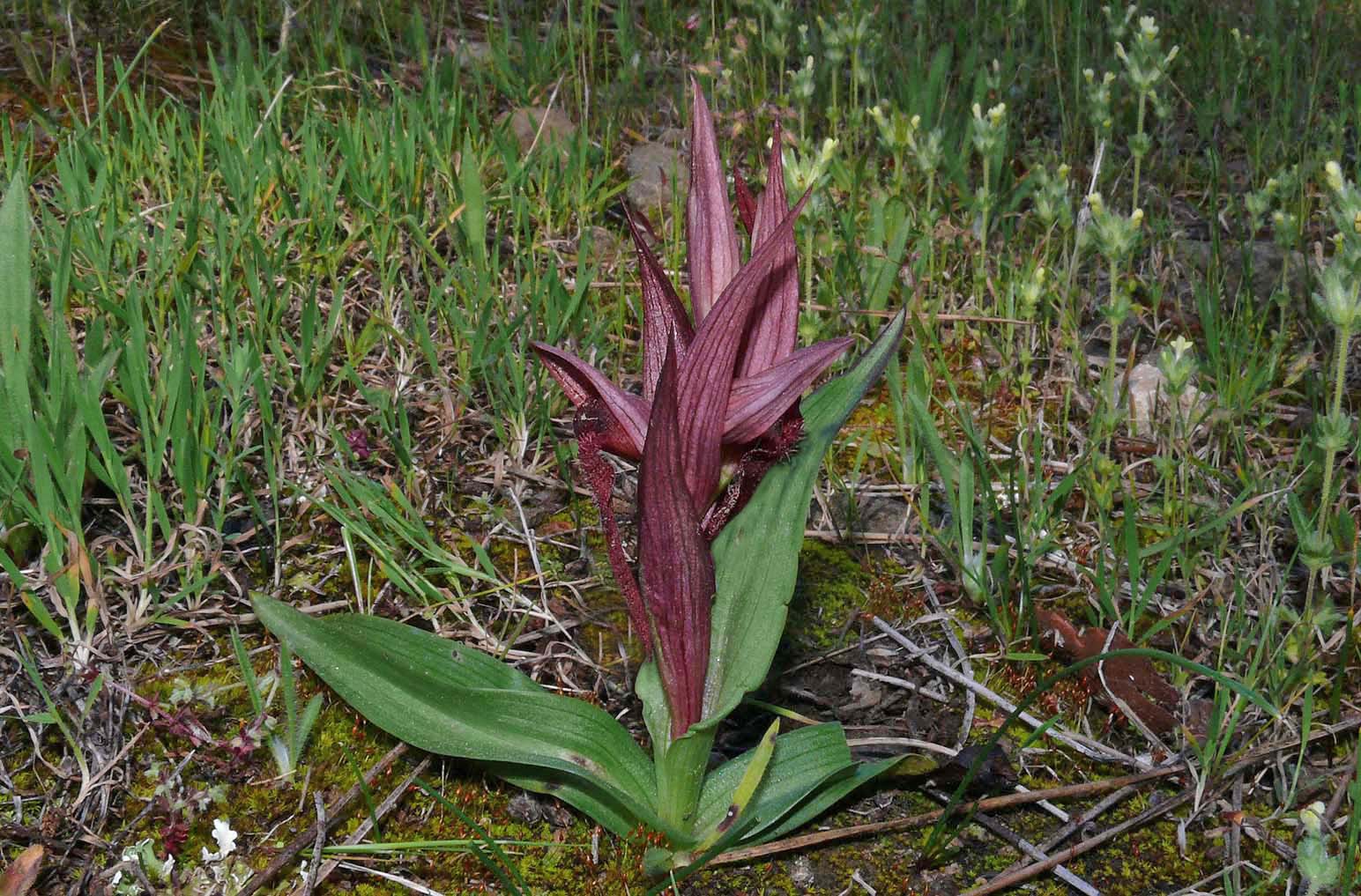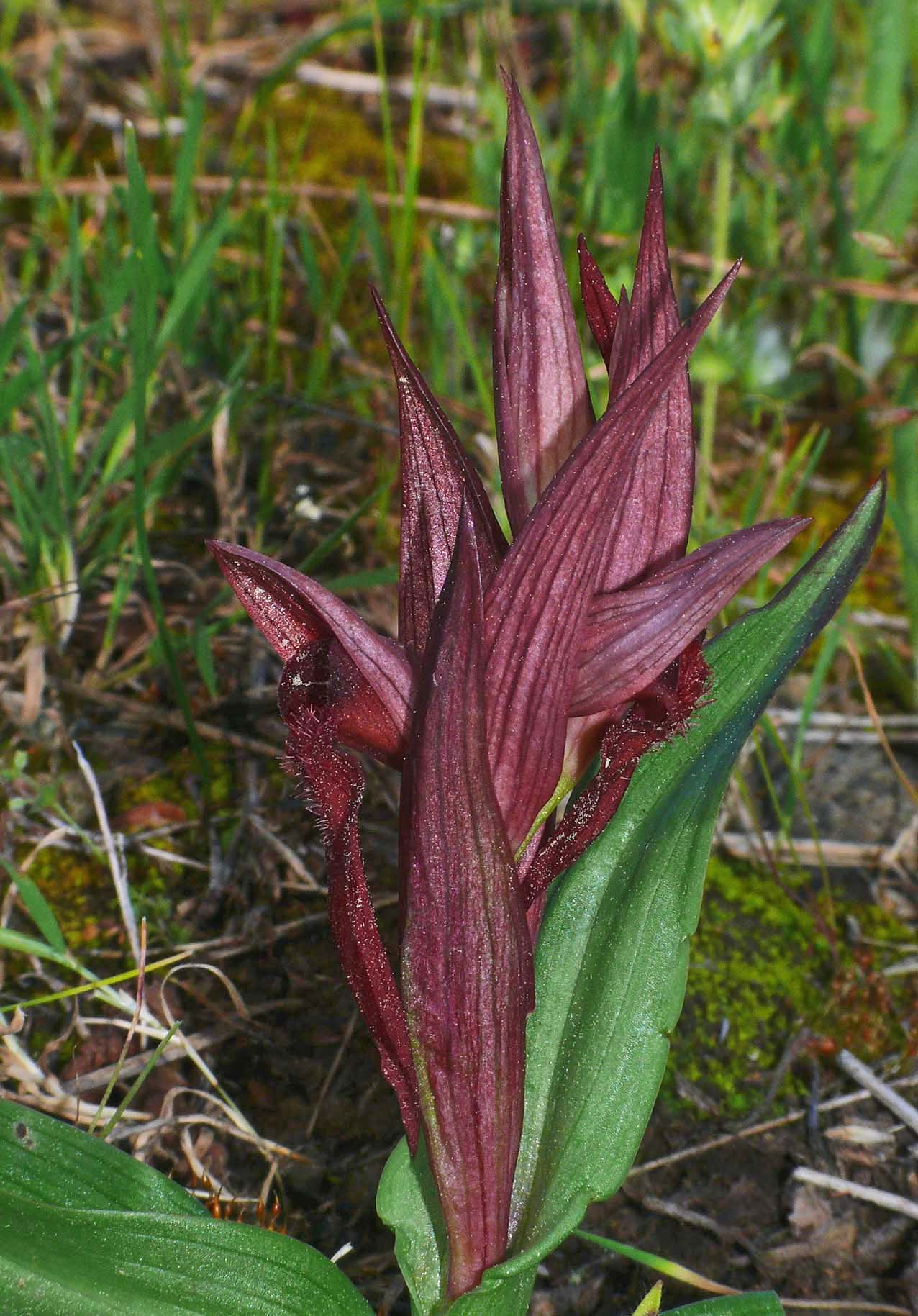S. levantina was first described by Baumann and Kunkele from Palestine in 1989 and it takes its name from Levantine meaning "from the near East".
Its range is not known with certainty but it's essentially an eastern Mediterranean species that occurs from Cyprus and Hatay across to Kurdistan. It's a somewhat localised plant but can be abundant in its favoured sites where as with S. vomeracea, it is not particularly fussy about its habitat. It can be found on both alkaline and slightly acidic substrates, in either dry or damp conditions and although it will happily grow in full sun, our experience of the species in Cyprus suggests that it has a preference for a degree of shade.
Identifying S. levantina can be difficult due to its almost certainly polymorphic origins. It appears to be intermediate between S. orientalis and S. vomeracea and although in Cyprus it can frequently exhibit features common to both, it can equally be indistinguishable from either ! This doen't seem to be a particularly sustainable position and whether or not this Serapias truly justifies full species status is an issue that would benefit from further work.
In its typical form its a smaller plant than S. vomeracea (up to 30 cms) and carries fewer flowers which tend to appear towards the top of the stem (as per S. orientalis) rather than alternately from a lower point as with S. vomeracea. The stem itself is often washed red though the leaves are usually an unmarked bright green. The illustrations give an idea of the range of variation within the species and come primarily from the Akamas hills of Cyprus, dating from the first week of March.
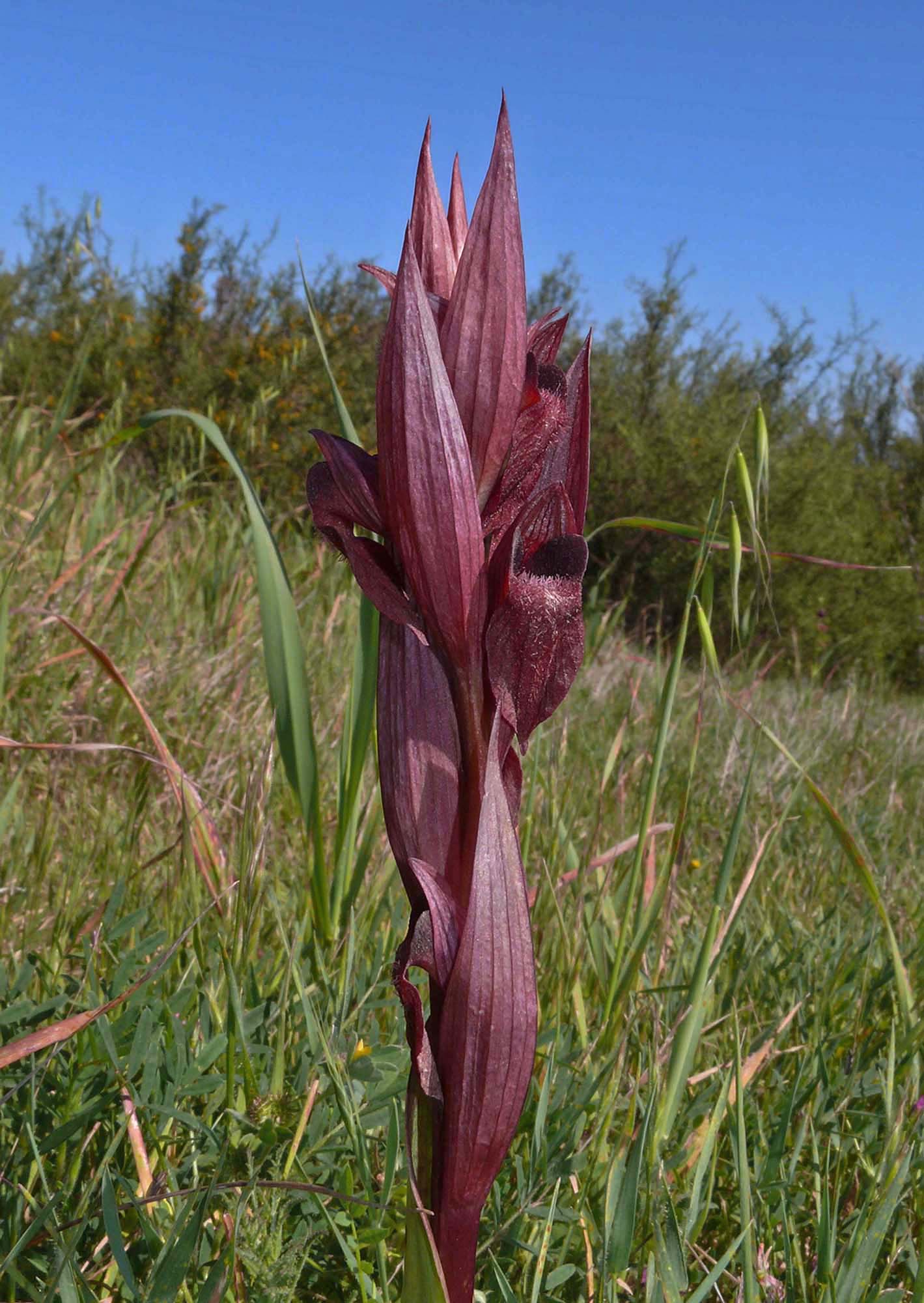

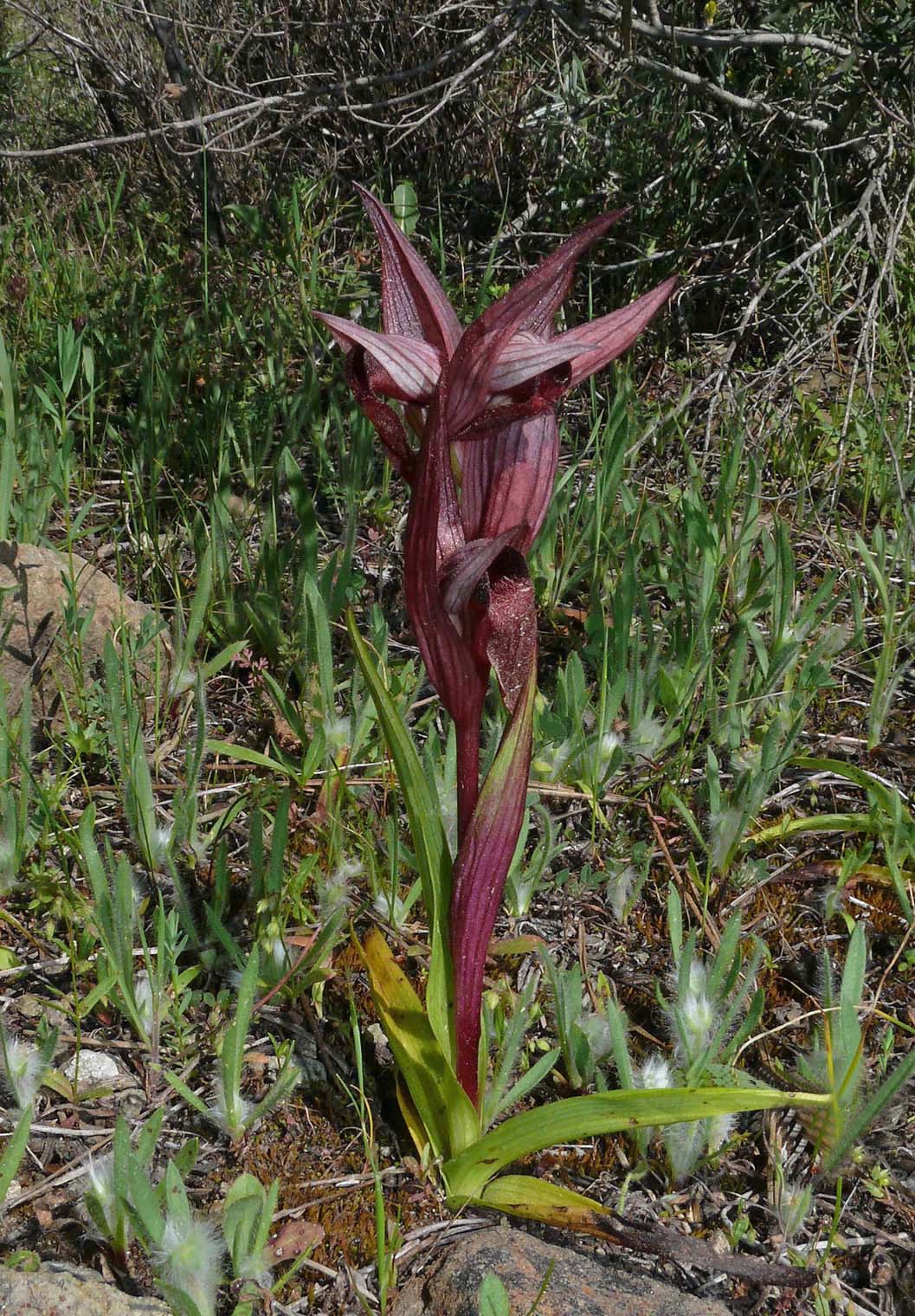
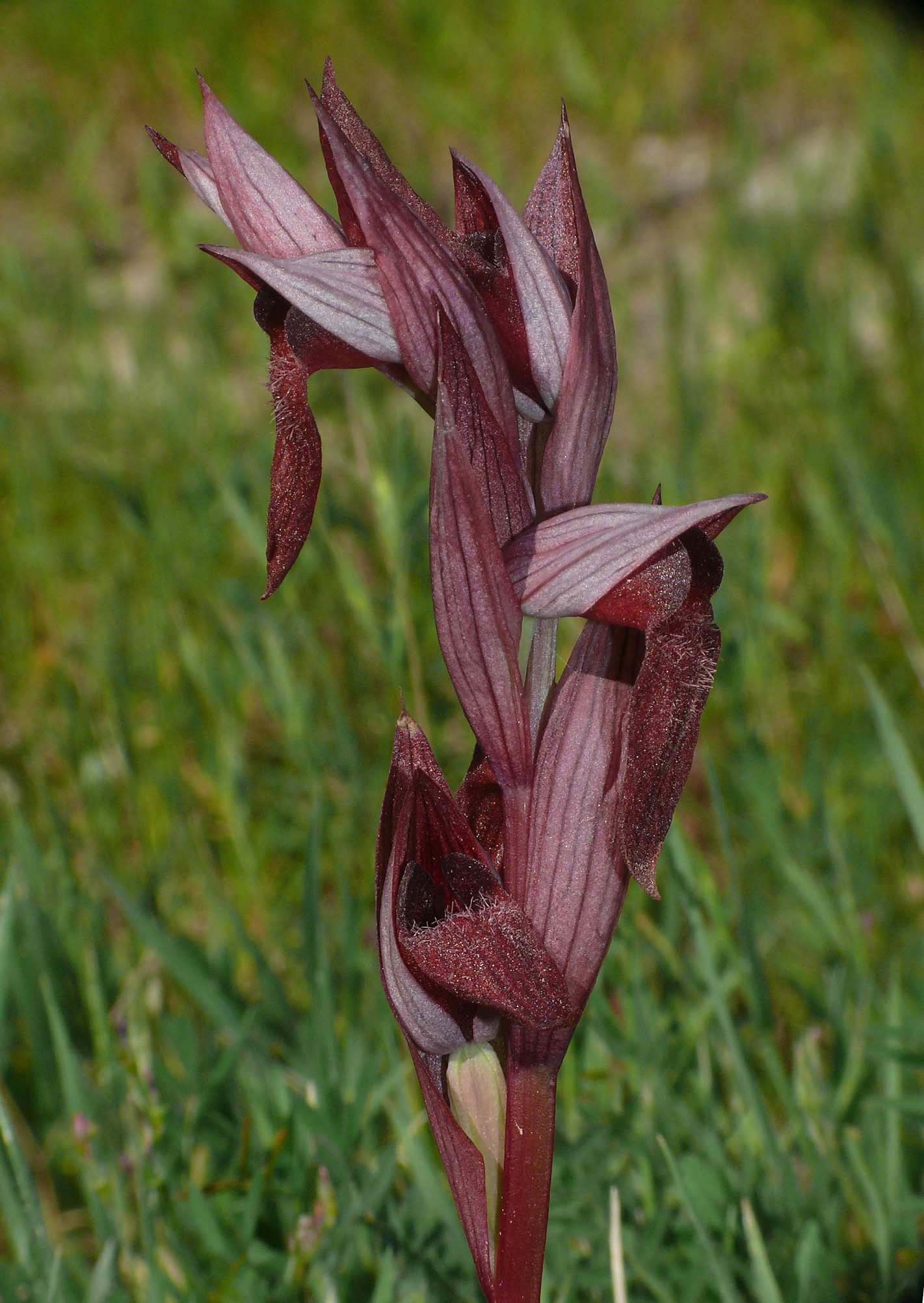
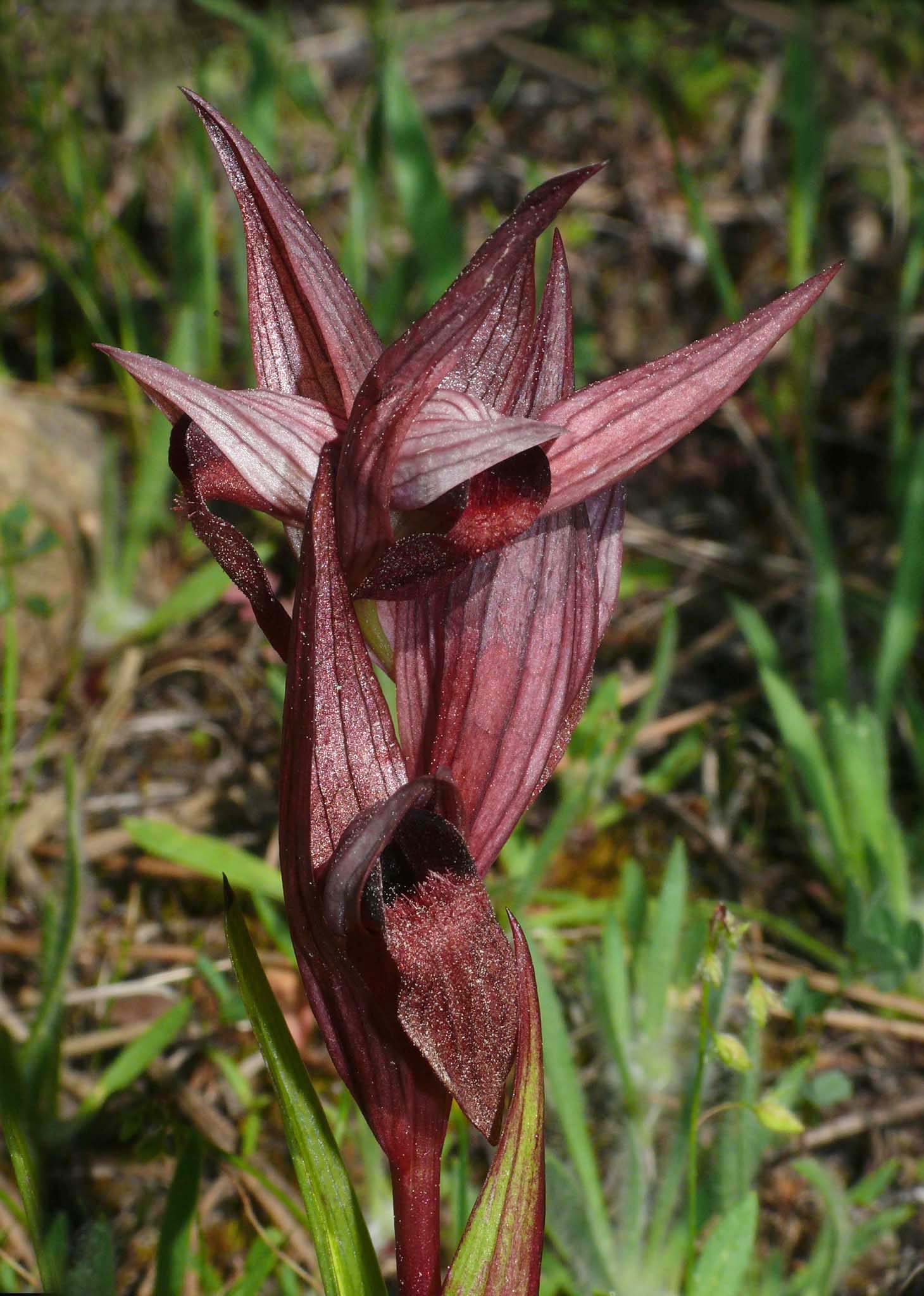
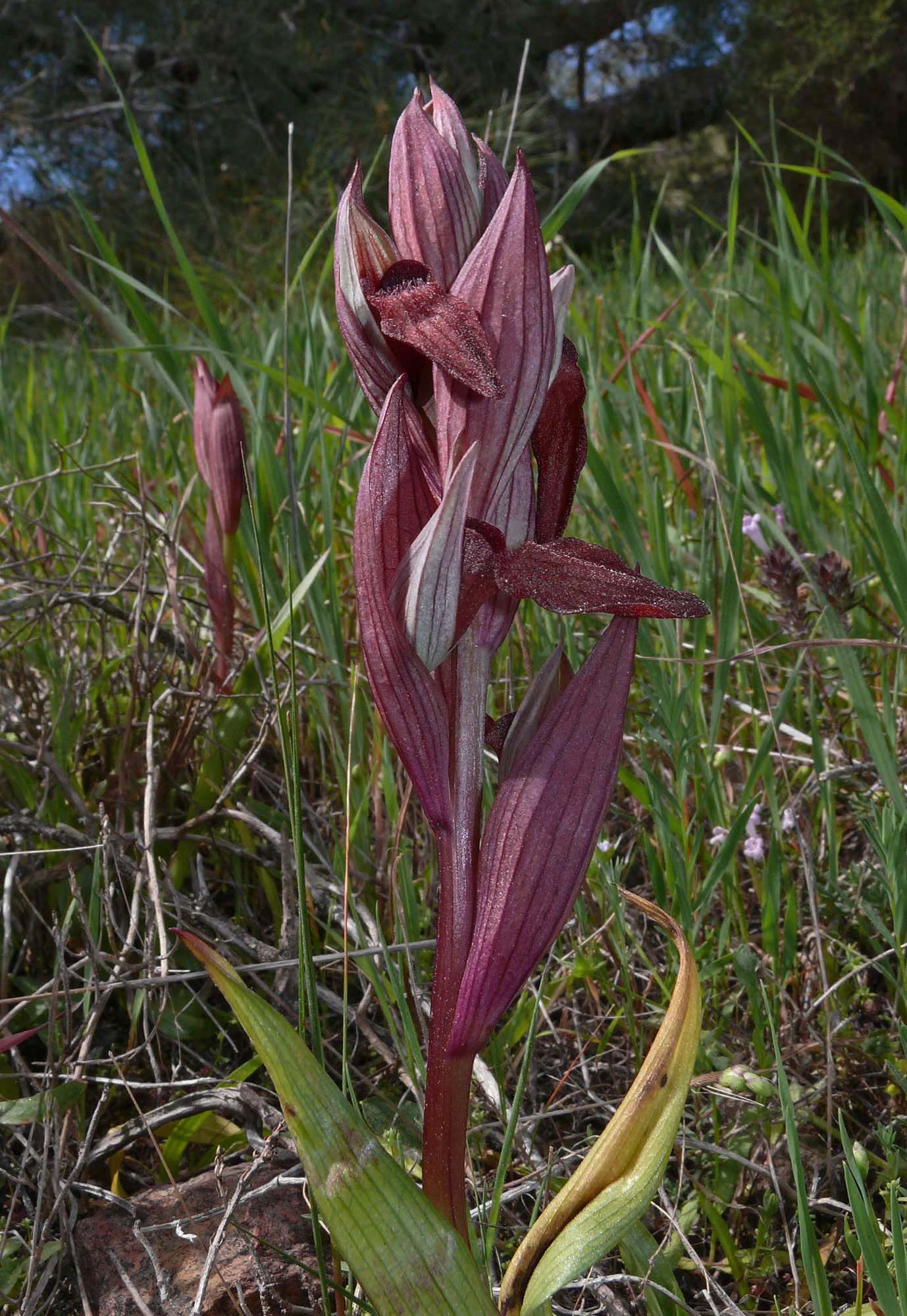
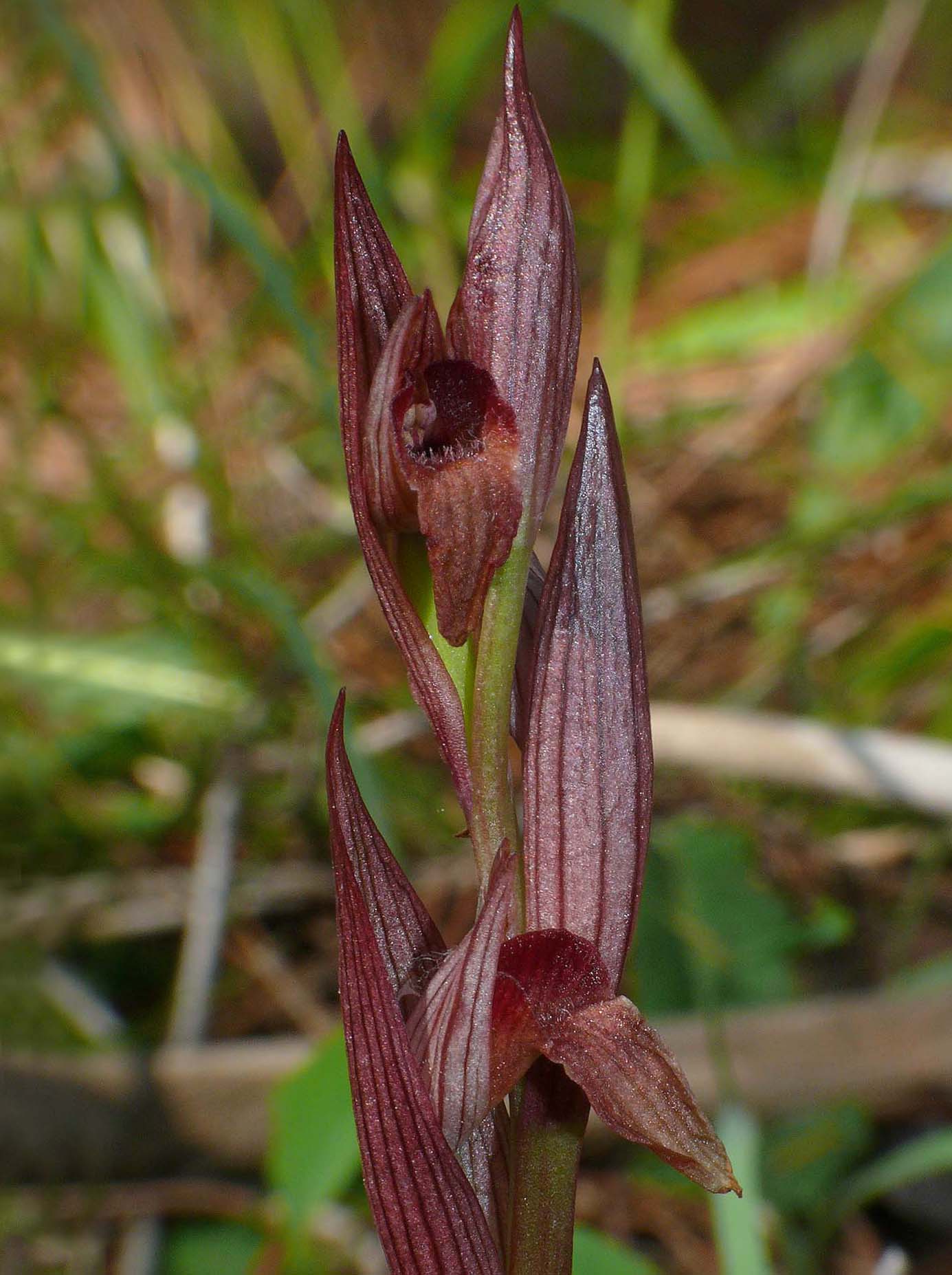
The following two photographs depict an extremely unusual Serapias that was found growing with a loose colony of S. levantina in the Akamas, Cyprus. Whilst the
plant exhibits typical features of this species, the epichile is enormously elongated.
